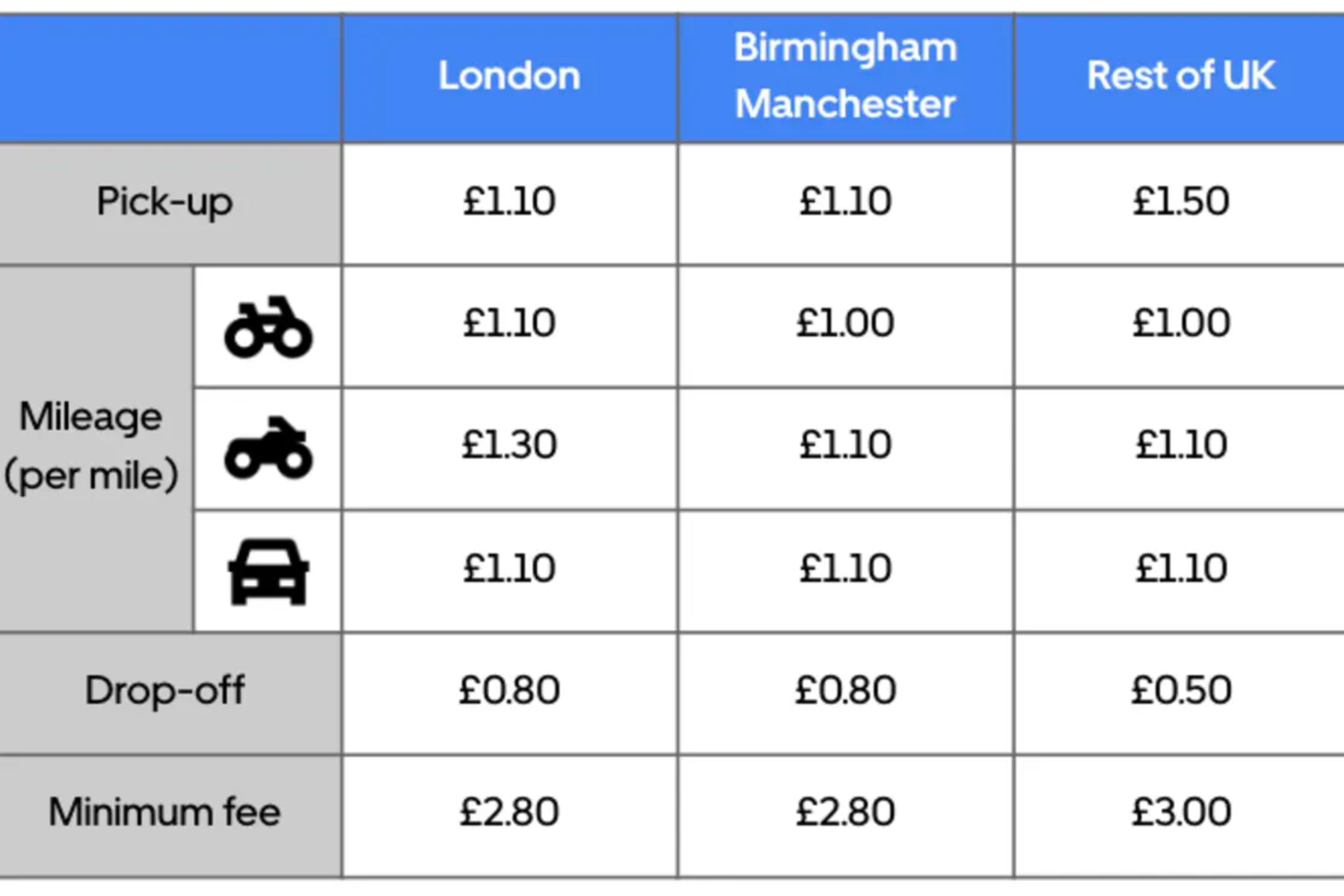Introduction
Uber Eats has become a popular option for many seeking flexible work. While some drivers report substantial earnings, others find the prospect less appealing. This blog post explores the realities of working for Uber Eats, including potential earnings, expenses, and personal experiences from drivers across various markets.
Understanding the Earnings Potential
Many Uber Eats drivers report earnings ranging from $20 to $36 per hour, heavily influenced by location and demand. In metropolitan areas like San Francisco, some drivers claim they can earn closer to the higher end of this range, with reports of hourly earnings hitting $30 or more during peak hours. However, averages tend to fall into the low to mid-$20s in other cities, with many drivers averaging around $22 per hour. Factors affecting earnings include the time of day, local demand, and competition among drivers. For example, during lunch and dinner rushes in busy urban environments, drivers can expect more orders and better tips. Conversely, during slower hours or in less populated areas, earnings can drop significantly. Understanding these dynamics is crucial for potential drivers to set realistic expectations about their earning potential.

The Impact of Location on Earnings
Earnings can vary significantly based on where you drive. Areas with high restaurant density and demand, such as urban centers, typically offer better opportunities for drivers. In contrast, rural or less populated areas may yield lower earnings due to fewer orders and longer wait times. For example, drivers in cities like New York or Los Angeles often benefit from a greater volume of delivery requests, which can translate into more consistent earnings throughout their shifts. Some drivers emphasize the importance of knowing which neighborhoods generate the most delivery requests to optimize their work hours. By strategically positioning themselves in high-demand areas, drivers can maximize their earning potential and minimize idle time.
Breakdown of the Pay Structure
Uber Eats drivers earn money through a combination of base pay, pickup and drop-off fees, and tips. The base pay consists of a small fee for picking up and dropping off food, as well as a per-mile rate for the distance driven. While this might seem straightforward, the complexity of the pay structure can lead to disappointment for drivers who expect higher earnings. Drivers often report that unpaid wait times at restaurants can significantly cut into their earnings. For instance, if a driver spends 15 minutes waiting for an order but is only compensated for the distance driven, this can lead to lower overall hourly earnings. Additionally, understanding how to navigate the app effectively and choose the right orders can make a difference in their overall income.
Tips: A Variable Source of Income
Tips can significantly influence a driver’s overall earnings, but they are unpredictable. Many drivers report that tips are infrequent, particularly for fast-food deliveries where customers may feel less inclined to tip. On the other hand, deliveries from higher-end restaurants often yield better tips due to customer expectations around service and quality. This unpredictability makes it essential for drivers to manage their expectations regarding total earnings. Some drivers recommend building rapport with customers to encourage tipping, while others suggest focusing on orders from restaurants known for generous tipping. Overall, while tips can enhance earnings, they should not be relied upon as a consistent source of income.
Expenses and Taxes
While drivers can earn a decent wage, they also face various expenses, including fuel, vehicle maintenance, and insurance. Understanding these costs is vital for calculating net income. On average, drivers may spend around 20-30% of their earnings on expenses, which can include gas, routine maintenance, and wear and tear on their vehicles. Additionally, Uber Eats drivers are considered independent contractors and must handle their own taxes. This can be complex, as drivers need to keep track of their income and expenses throughout the year. Learning about tax deductions and write-offs available to gig workers—such as vehicle depreciation, fuel costs, and even a portion of phone bills—can help maximize earnings and minimize tax liability.
The Importance of Strategy and Timing
Timing and strategy are crucial for maximizing earnings with Uber Eats. Many drivers find that working during peak hours—like dinner time—yields higher payouts. For instance, in many urban areas, the dinner rush from 5 PM to 9 PM often sees a spike in demand, leading to increased order volumes and higher tips. Additionally, knowing which types of orders to accept or decline can make a significant difference. Drivers often recommend focusing on high-paying orders that are also relatively close in distance, as this reduces time spent driving. By strategically planning their hours and being selective with orders, drivers can optimize their delivery efficiency and earnings.
Personal Experiences: The Good and the Bad
Drivers share mixed experiences with Uber Eats. While some appreciate the flexibility and extra cash, others criticize the pay structure and customer treatment. Many report feeling frustrated with the lack of support from Uber and the inconsistencies in pay. Personal anecdotes highlight the need for patience and resilience in this line of work. Some drivers find joy in the freedom of choosing their hours and working independently, while others struggle with the unpredictability of earnings and the challenges of customer interactions. Overall, personal experiences vary widely, making it essential for prospective drivers to weigh the potential benefits against the drawbacks.
Alternatives to Uber Eats
For those considering gig work, exploring alternatives to Uber Eats may be beneficial. Other delivery services like DoorDash, Postmates, or rideshare options like Uber and Lyft can offer different earning potentials and experiences. Each platform has its unique features, pay structure, and customer base. Understanding the pros and cons of each platform can help drivers find the best fit for their needs. For instance, some drivers prefer DoorDash for its promotional bonuses and incentives, while others enjoy the flexibility of Postmates. Exploring multiple platforms can also provide greater earning opportunities and allow drivers to switch between services based on demand.
Conclusion
Understanding the realities of working for Uber Eats requires careful consideration of various factors, including earnings potential, expenses, and personal experiences. While many drivers find value in the flexibility it offers, potential drivers should weigh the pros and cons before committing. With the right approach and strategic planning, it is possible to make Uber Eats a viable source of income. However, drivers should remain aware of the challenges and expenses associated with gig work to ensure they can maximize their earnings while enjoying the flexibility of the job.
